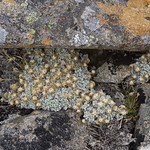|
Ewartia Planchonii
''Ewartia planchonii'', commonly known as creeping cushionherb, is an endemic herb to alpine areas of Tasmania. ''E. planchonii'' is commonly found in the western highlands of Tasmania. The ''Ewartia'' genus is described as cushion plants/herbs due to the characteristic growth habits of low growing, highly compact mats which are made up of highly packed stems. These mats are slow-growing and are often located in soils that contain low nutrients. Description ''Ewartia planchonii'' is a sprawling herb which forms mat-like ground coverage over rocky alpine landscapes. Leaves are densely tufted, overlapping along the stem, obovately shaped and 3-6mm long. The leaves are also covered by soft hairs which whiten with age. Flowerheads are ovoid in shape and open up flat to 7-8mm long, brownish/ yellow and lack the usual petal-like bracts. Flowering occurs over the summer months to increase chances of pollination. Habitat and distribution Commonly found in locations of alpine/subalpin ... [...More Info...] [...Related Items...] OR: [Wikipedia] [Google] [Baidu] |
Endemism
Endemism is the state of a species being found in a single defined geographic location, such as an island, state, nation, country or other defined zone; organisms that are indigenous to a place are not endemic to it if they are also found elsewhere. For example, the Cape sugarbird is found exclusively in southwestern South Africa and is therefore said to be ''endemic'' to that particular part of the world. An endemic species can be also be referred to as an ''endemism'' or in scientific literature as an ''endemite''. For example '' Cytisus aeolicus'' is an endemite of the Italian flora. '' Adzharia renschi'' was once believed to be an endemite of the Caucasus, but it was later discovered to be a non-indigenous species from South America belonging to a different genus. The extreme opposite of an endemic species is one with a cosmopolitan distribution, having a global or widespread range. A rare alternative term for a species that is endemic is "precinctive", which applies to ... [...More Info...] [...Related Items...] OR: [Wikipedia] [Google] [Baidu] |
Tasmanian Cushion Plants
Tasmanian cushion plants are low growing, highly compact, woody, spreading mats that can grow up to 3 m in diameter, located mainly on the island of Tasmania. These mats are made up of tightly packed stems that grow at the same rate so that no apical rosettes protrude above the rest. The term cushion plant refers to a characteristic growth habit adopted by various species from a range of families to adapt to alpine and subalpine environments and areas of high latitude. They are adapted to grow in low nutrient areas and typically have deep taproots. Cushion plants are very slow growing and do not grow high above ground; mounds typically remain under 30 cm high. Underneath the living surface of the cushion, the plants either allow dead leaves to persist or produce non-photosynthetic material, resulting in an insulating effect. Floristics of Tasmanian cushion plant community Six families, including seven species, of cushion plants occur in Tasmania, and one additional family and ... [...More Info...] [...Related Items...] OR: [Wikipedia] [Google] [Baidu] |
Herbfield
Herbfields are plant communities dominated by herbaceous plants, especially forbs and grasses. They are found where climatic conditions do not allow large woody plants to grow, such as in subantarctic and alpine tundra Alpine tundra is a type of natural region or biome that does not contain trees because it is at high elevation, with an associated alpine climate, harsh climate. As the latitude of a location approaches the poles, the threshold elevation for alp ... environments. Herbfield is defined in New South Wales (Australia) government legislation as native vegetation that predominantly does not contain an over-storey or a mid-storey and where ground cover is dominated by non-grass species. The New Zealand Department of Conservation has described herbfield vegetation as that in which the cover of herbs in the canopy is 20–100%, and in which herb cover is greater than that of any other growth form, or of bare ground.Lux et al. (2009). Various kinds of herbfield i ... [...More Info...] [...Related Items...] OR: [Wikipedia] [Google] [Baidu] |

.jpg)